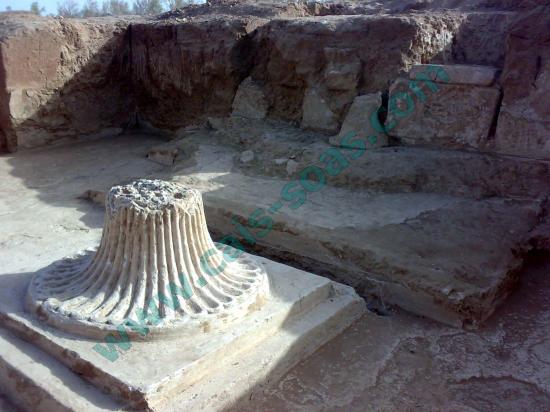Latest season of archaeologists research in Vigol led to discovery of a Sasanian fire temple and metal-melting workshop
Source : http://www.cais-soas.com/news/index.php?option=com_content&view=article&id=147:latest-season-of-archaeologists-research-in-vigol-led-to-discovery-of-a-sasanian-fire-temple-and-metal-melting-workshop&catid=44

A team of Iranian archaeologists have discovered a Zoroastrian fire temple dating back to the Sasanian dynastic period in the historical city of Vigol, located ten kilometres north of the township of ‘Aran o Bidgol’, in the north of Esfahan province.
The fire temple is being named after the site as ‘Vigol’.
“In this season we have managed to discover a unique and lavishly decorated Sasanian fire temple in Vigol”, said Mohsen Javari the director of the archaeological team at Vigol.
“The fire temple has a typical Char-Taqi construction, with the remains of a fire altar at its centre, lavishly decorated similar to those found in Fars and Mazandaran provinces, though it is unique to this area”, said Javari.
With regard to the fire altar Javari explained: “the actual base is made of rubble masonry bounded together with sāruj (a mortar of cement and gypsum), coated with a stucco decoration in a shape of a lotus with a tapered fan fluted body divided into 38 lines.”
“The fire temple has four openings and evidence suggests the doorways were painted in ochre colour”, he added.
Javeri in July claimed the fire temple was used during the period and after the fall of the Sasanian dynasty due to the fact that the fire temple floor has been replastered several times.
In addition to the fire temple, archaeologists have discovered a metal-melting workshop and two extraordinary water wells, dated to the same period.
According to Javari, the wells were ingeniously constructed. In order to prevent the walls of the wells from collapsing, the Sasanian engineers, instead of using giant ceramic pipes, or bricks placed on top of each other, they lit a massive bonfire inside the well, causing the walls to bake and to be hardened enough to form a giant one piece shaft.
The site of Vigol was identified back in 2005 and in the following year a joint team of archaeologists from universities of Esfahan, Tehran and Kashan led by Mohsen Javari began their work on 120 hectares of the ancient site. The preliminary research showed, there were two ancient cities that were constructed adjacent to each other, only 800 meters apart. Subsequently, the research led to the discovery of two large fortresses, one at each city named Western and Eastern respectively.
Both fortresses were abounded in ruins sometime during or after the dynasty of the Saljuqians of Kerman (1041-1187 CE).
According to the Javeri, from both sites large numbers of potsherds and other material cultures, majority of which date to the Sasanian dynastic era (224-651 CE) were recovered. Three years after the 1979 revolution, some sections of the Eastern fortress were destroyed by looters using heavy equipment such as loaders in search of treasures. Until 2006, the site was left unprotected to the point that the looters were able to have built a camp with enough facilities to conduct their smuggling operations.
The adjacent Sasanian city was called ‘Harāsgān’.